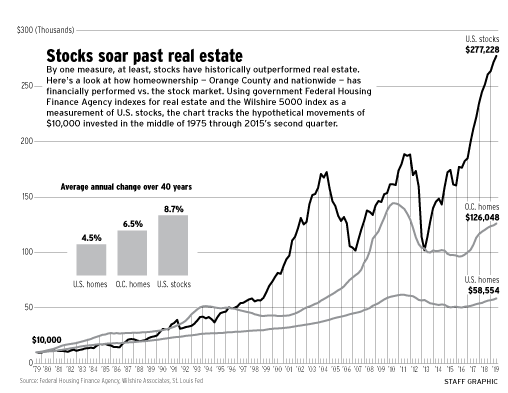A bear market describes a broad and sustained decline in the price of a stock or other asset over a period of time. A bear market rally is a rise in stock prices after falling into a bear market, but only briefly before a new low. A bull market is the exact opposite of a bear market – it describes an economy with rising stock prices, high investor confidence and a very optimistic outlook.
A bear market is when stock prices fall by 20% or more, while a bull market is when stock prices rise by 20% or more. A bear market is when the stock price of a major market index such as the S&P 500 or the Dow Jones Industrial Average falls by at least 20% from a recent high. A pullback occurs when a stock falls 10% or more from a recent high, and once the 20% threshold is reached, a pullback can escalate into a bear market.
While a bear market is usually a sign of negative investor sentiment, a market correction is usually a temporary price reversal before the market continues to rise. Because bear markets often precede or coincide with recessions, investors generally prefer assets that offer more consistent returns during that time, no matter what happens in the economy. If you change your mind and focus on potential gains rather than potential losses, a bear market can be a great opportunity to buy stocks at lower prices. Invest in stocks that you want to hold for the long term and don’t sell them just because their prices are falling in a bear market.
One of the biggest dangers investors face is the risk of exiting stocks at the wrong time and losing profits in a bull market. When you look for stocks that perform well and keep changing your strategy or buying and selling frequently, you can actually reduce your chances of losing money in the stock market. During a bear market, many investors may want to sell their investments to protect their funds, obtain cash, or move their holdings into more conservative stocks, which can have the undesirable side effect of encouraging a sell-off in stocks. Prices are even lower. Bear markets can also force investors to sell their investments for less than they paid, which could prevent them from achieving their long-term financial goals.
As market participants became more pessimistic about the economy and the market, they sold their investments. Eventually, investors start looking for attractively priced stocks and start buying, officially ending the bear market. During a bull market, investors tend to be bullish and reward moderately good news with higher share prices, driving the upward spiral. A bull market occurs when stock prices rise steadily, usually accompanied by high consumer confidence, low unemployment, and strong economic growth.
Boosting portfolio diversification during a bear market
The value of diversifying your portfolio is apparent over time, but many investors fail to fully realize its potential. Individual investors tend to focus on one or two high-conviction investments, selling them when prices are low in order to avoid the consequences of eventual recovery. This behavior is counterproductive, and it can result in missed opportunities. During bear markets, the degree of underperformance by individual investors is often at its highest.
The stock market often recovers after a bear market, so buying shares at a discount is a good strategy for long-term investors. Even if valuations have fallen below their pre-Cold War highs, the shares of great companies are still likely to rise in the future. However, bear markets do not last forever, and the next bull market may not be as exciting as the last one.
To protect your assets from volatile markets, diversify your investments. Diversifying your portfolio will reduce losses caused by bad stock years, allowing you to reap profits from bad years. Ideally, you’ll have a 50-50 mix of stocks and bonds, but you can increase your risk by adding in some bonds and low-correlation asset classes. A good rule of thumb is to have less than 20% of your portfolio in a single index, and a higher proportion of bonds to increase your diversification.
During a bear market, investors will be attracted to dividend-paying stocks. Utility companies, for example, are likely to pay higher dividends than usual. Bonds are another attractive option during a bear market, as they tend to move in opposite directions to stock prices. In addition to dividend-paying stocks, bonds are a safe, low-risk way to ease the pain of a bear market.
When a bear market occurs, it’s essential to boost portfolio diversification. A bear market can occur prior to or after a recession. In either case, investors carefully monitor key economic indicators, including hiring and wage growth. If they notice a slowdown in these factors, they should sell their stocks, as a bear market can signal tougher economic times ahead. But how can you avoid falling stocks in a bear market?
Avoiding selling everything off during a bear market
The most important thing you can do to avoid selling everything off during a bear market is to stay the course. While watching the headlines can add jitters, it’s also a good idea to buy during low prices and shift your portfolio to income-producing investments. If you’re selling during a bear market, you’ll likely regret it when the market recovers. Taking some steps to prepare yourself now will prevent you from committing a fatal mistake later.
The average investor’s portfolio is too aggressive, which is part of the psychological risk of bear markets. Many investors lose more money than they can afford. As you get older, you should reduce risk and look toward the future. Becoming a millionaire requires you to think long-term and avoid selling everything off at once. While selling stocks during a bear market can be counterintuitive, you can invest like a millionaire by staying focused and strategic. Avoid the temptation to panic, and monitor your accounts sparingly. Assess each investment according to your time horizon.
A bear market will test the resolve of any investor. Bear markets tend to be short-lived and often go hand-in-hand with a slowing economy. However, if your long-term investment plan is long-term, you’ll have no problem weathering the dips. Remember, this is a part of investing, not the end of the world. Keep in mind that the best time to sell is when prices are low, not when the market is soaring.
If you can afford it, make an emergency fund before selling everything off. Putting money aside now will reduce your risk of selling stocks during a bear market. If you don’t have an emergency fund, selling stocks during a bear market is bad for your investment portfolio. However, if you can wait a few months for your emergency fund, the market will likely rebound and your investment portfolio will not suffer much damage.
A bear market is painful, but it is usually short-lived. The best way to avoid losing everything during a bear market is to select high-quality investments and hold them for a long time. You may also want to keep an eye on growth stocks and potentially volatile investments. Bear in mind, though, that past performance is no guarantee of future price appreciation. This is particularly true for stock investments, so it’s vital to avoid panic-selling during a bear market.
Boosting returns during a bear market
A recent study by the Wells Fargo Investment Institute found that the average 12-month return after a bear market was 43.4%. To protect yourself during a bear market, keep your cash in high-yield savings accounts or money market accounts. These will serve as “dry powder” to buy in the event that the market dips. However, you should not rely on these strategies as a complete fix to a bear market.
If you’re looking to increase your returns during a bear market, it’s crucial to stick to stocks with a high dividend yield. Many stocks are down 30, 40%, or 50% from their peaks. If you’ve recently bought a stock and it’s currently falling by 50%, it’s time to reassess your investment. Ask yourself: why did I invest in that stock or company in the first place? Consider your time horizon and investment goals. If you’re looking to make money for the long term, you’ll want to give the market time to recover.
As with any other aspect of investing, consistency is key. While bear markets can be frightening, they are often times a valuable opportunity to boost returns. The lower prices that bear markets offer allow you to buy more stock for the same amount of cash. As you’re working towards your retirement, you might want to continue saving in the same proportions that you did when the market peaked. In addition to boosting returns, investing during a bear market allows you to buy more shares of dividend-paying companies with the same amount of money.
If you’re unsure about investing during a bear market, try to look for companies that have no viable alternatives. Often times, these are companies that will thrive despite the bear market. By parking your cash somewhere else, you can buy when the time is right and averaging down. This strategy is called “parking your cash”.
Investing during a bear market
It’s normal to feel nervous when the market is in a bear market. The volatility and bad headlines tend to make investors panic and make mistakes. However, investors should remember that every bear market is temporary and will eventually return to normal levels. Even if the market is down, you will not actually lose any money unless you sell your investments. So don’t panic – investing during a bear market will make you a more successful investor in the long run.
The length of a bear market can vary from several months to several years, and it’s important to decide how long you’re prepared to hold an investment. Bear markets can interrupt retirement plans and near-term goals. Therefore, you should minimize your portfolio risk by limiting your exposure to high-quality bonds and stocks during a bear market. You should also limit your exposure to short-term investments. You should also invest in stocks that have a longer time horizon.
A bear market typically begins during an economic recession, when economic activity slows and consumer spending decreases. Because the economy is in a recession, many companies experience steep declines in their share prices, as investors shift their risk tolerance to safer investments. The S&P 500 Index, for example, entered a bear market in the first half of 2022, when it dropped 22 percent from its January 3, 2022 high.
Although investors should prepare themselves for a bear market, they should avoid panic selling and instead make sure that their portfolio is well diversified and aligned with their risk tolerance. These investors will be able to ride out any market fluctuations better than those trying to time the market. In this way, the bear market will not ruin your finances. If you’re an experienced investor, investing during a bear market may be the right strategy for you.
The stock market goes through four phases. The first phase of a bear market is characterized by high investor sentiment, with prices increasing over time. Towards the end of this phase, investors begin to pull out of the market. This produces the second phase of a bear market, which is followed by a steep decline in prices and market value. This is the most important stage of a bear market. A bear market is also the best time to get involved in an investment.
Join The Professional Stock Investing (PSI)™
Learn How to Develop a Million Dollar Stock Portfolio
On the Professional Stock Investing, you will learn:
- Invest in Winning Stocks That Generate High Double-Digit Returns
- Identify Market Uptrends and Downtrends Accurately
- Hedge and Protect Your Portfolio from Market Crashes
- Manage Your Risks and Maximize Your Returns
- Develop the Psychology of a Disciplined Investor
- Build a Winning Portfolio That Suits Your Investment Goals
Helpful Links:
Homepage
About
Contact
Personal Development Partner




